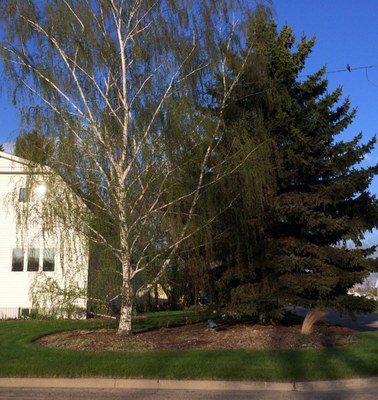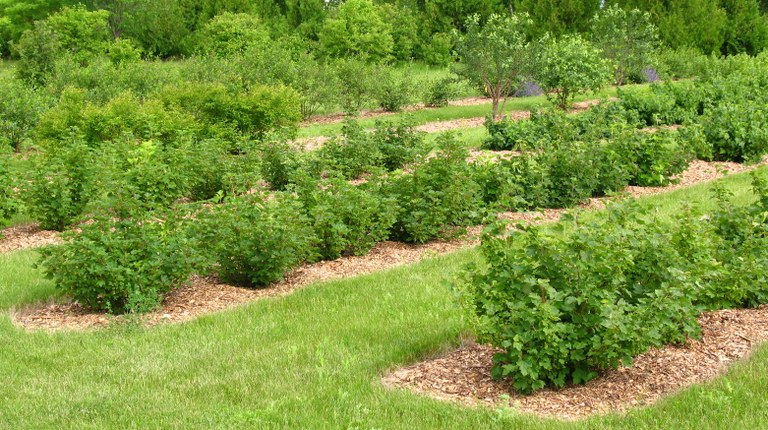The Beauty of Mulch
 A wood chip mulch is one of the nicest things you can do for your landscape trees and shrubs.
A wood chip mulch is one of the nicest things you can do for your landscape trees and shrubs.
In America, grass and trees tend to be planted together, with grass growing right up to the tree trunk. This manicured lawn is a look that we have come to accept as normal yet in reality, grass and trees are incompatible and adversely affect one another.
Trees and grass compete for precious soil moisture in North Dakota. Both become stressed and this leads to reduced growth, diseases and increased susceptibility to pests for both species. Weeds with low moisture requirements can easily become established in this situation and perhaps lead a homeowner to apply additional pesticides. In addition, both grass and trees produce compounds that inhibit each other’s growth; this is called allelopathy and is best known to homeowners with black walnut trees.
Weed-free, clear soil seems to be popular here. While the trees grow better than when planted with grass, it is still not ideal. Wind strips moisture from the bare soil, tillage breaks the tree’s feeder roots which reside in the uppermost soil, and broadleaf weed herbicides can sometimes lead to permanent tree damage (they are also broad-leaved plants). In a forest, trees create their own mulch with fallen leaves which helps retain soil moisture, moderates soil temperature and increases the organic matter in the soil as the mulch decays. In your yard, woodchip or leaf mulch works the same way and also creates a buffer to keep the mower and weed-whipper away from the trunk.
In the Sustainable Urban Landscape Information Series from the University of Minnesota, there is a wonderful article on this subject: “Trees and Turf: Are They Compatible?” In it, “a field study at the Morton Arboretum in Lisle, Illinois, showed that after only two months, elimination of grass around 20-year old trees resulted in a 113% increase in fine root density in sugar maples, and increases of over 30% in green ash and littleleaf lindens. Root density increased even more when an organic mulch cover was applied.” Roots feed your trees; if they increase, your tree will have a better life.
Alright, start mulching. Happy, healthy trees and fewer weeds – that’s beautiful!
http://www.sustland.umn.edu/implement/trees_turf.html
http://ohioline.osu.edu/b894/pdf/b894.pdf

Mulch conserves water and reduces weeding in the CREC Fruit project.
Kathy Wiederholt
Fruit Project Manager


